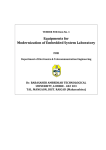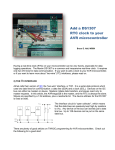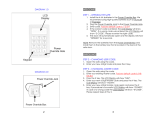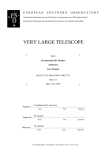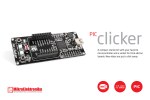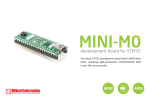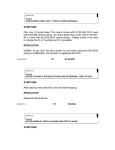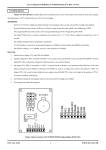Download RTC2 User Manual - MikroElektronika
Transcript
All Mikroelektronika’s development systems feature a large number of peripheral modules expanding microcontroller’s range of application and making the process of program testing easier. In addition to these modules, it is also possible to use numerous additional modules linked to the development system through the I/O port connectors. Some of these additional modules can operate as stand-alone devices without being connected to the microcontroller. Manual Additional Board RTC2 ™ MikroElektronika RTC2 RTC2 (Real time clock) The real time clock enables the microcontroller to keep the real time and date including corrections for a leap year and months that have less than 31 days. It has an alarm function, featuring automatic power-fail detection. It is used to generate an interrupt and square wave output signal. Due to baterry cell the real time clock enables the microcontroller to keep the real time when the power supply is off. The real time clock is linked to the development system by connecting 2x5 female connector provided on the additional board to the 2x5 male connector provided on the development system’s I/O port. The RTC2 communicates to the microcontroller by using the serial I2C interface. The RTC2 is placed on the development system’s port that is connected to the built-in I2C microcontroller module. Figure 1: RTC2 Figure 2: RTC2 placed on the development system SMD jumpers are used for selecting the development system to place the additional board on. When setting SMD jumpers to PIC position (default position), the additional board can be connected to the development system supporting PIC microcontrollers. When setting SMD jumpers to AVR position, the additional board can be connected to the development system supporting AVR microcontrollers. In order to set SMD jumpers to AVR position, they should be resoldered, thus connecting middle contacts and AVR contacts. 2x5 female connector is used for connecting the additional board to the development system Figure 3: RTC2’s back side The DS1307 circuit pins are used for connecting to the microcontroller. Their functions are as follows: SQW SCL SDA - Pin used to generate an interrupt or square wave output signal - Serial clock line - Serial data line 2x5 CN1 female connector pins’ funtions: RC3 - SCL pin (jumpers are set to PIC position) RC4 - SDA pin (jumpers are set to PIC position) PC0 - SCL pin (jumpers are set to AVR position) PC1 - SDA pin (jumpers are set to AVR position) SQW/OUT - Pin used to generate an interrupt or square wave output signal Figure 4: RTC2 connection schematic MikroElektronika


